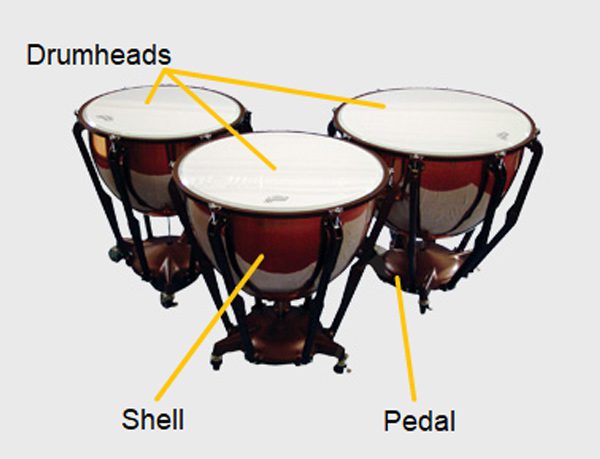Timpani are sometimes called “kettle” drums because they are shaped like big copper kettles. Timpani are often made of copper. They have a piece of calfskin or thin plastic stretched over their opening. This is called a drum head.
Timpani are very important in the orchestra because they “underline” important chords. Timpani are usually played in pairs –sometimes in threes or fours—because each drum is tuned to a different pitch.
Timpanists can change the pitch of each drum by pressing their foot on the pedal at the base of the drum which stretches the drum head. A good timpanist can tune the drums very quietly and quickly while the rest of the orchestra is playing.
Then, when it is time for the timpani part, the timpanist can make very loud sounds and even drum rolls by striking the drum heads with mallets which are made in many shapes and sizes and are made of many different materials.

